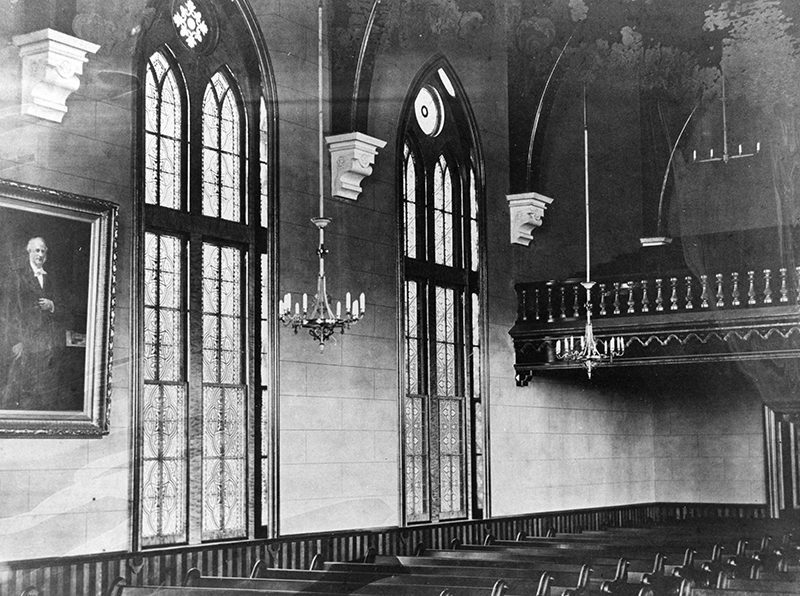Sermon on the Mount

An oil painting of Cornelius Vanderbilt peered regally over rows and rows of dark pews, where students would attend oratorical contests and sermons. Because the chapel served as the campus center for Methodism, the chapel would, of course, be lavishly adorned to look the part. As one journalist noted, “the chapel begins to show its fine proportions, and the work of the plasters came in for special commendation.” The fatigued pupils’ abhorrence of the chapel was evident, calling it a “gruesome enclosure in which cowed reluctance is corralled and watched over by amateur detectives.”
The presence of this chapel within the heart of campus was a source of familiarity for southern families. In reality, Vanderbilt did not offer an education as strong as some southern schools, but its Methodist identity was perceived to be “morally and doctrinally safe” to postbellum families who desperately needed a sense normalcy. Unfortunately, Vanderbilt’s Methodist hook was not enough to attract students forever – and Chancellor Kirkland learned it the hard way; its growing number of non-Methodist Christian students persistently resented the ecclesiastical influence on the university. What originated as a Methodist chapel soon became a chapel for all denominations, which marked a new era of growth for the university.
